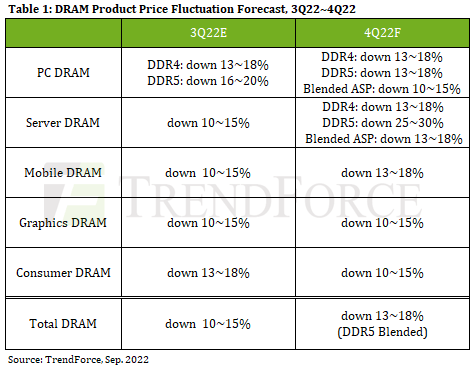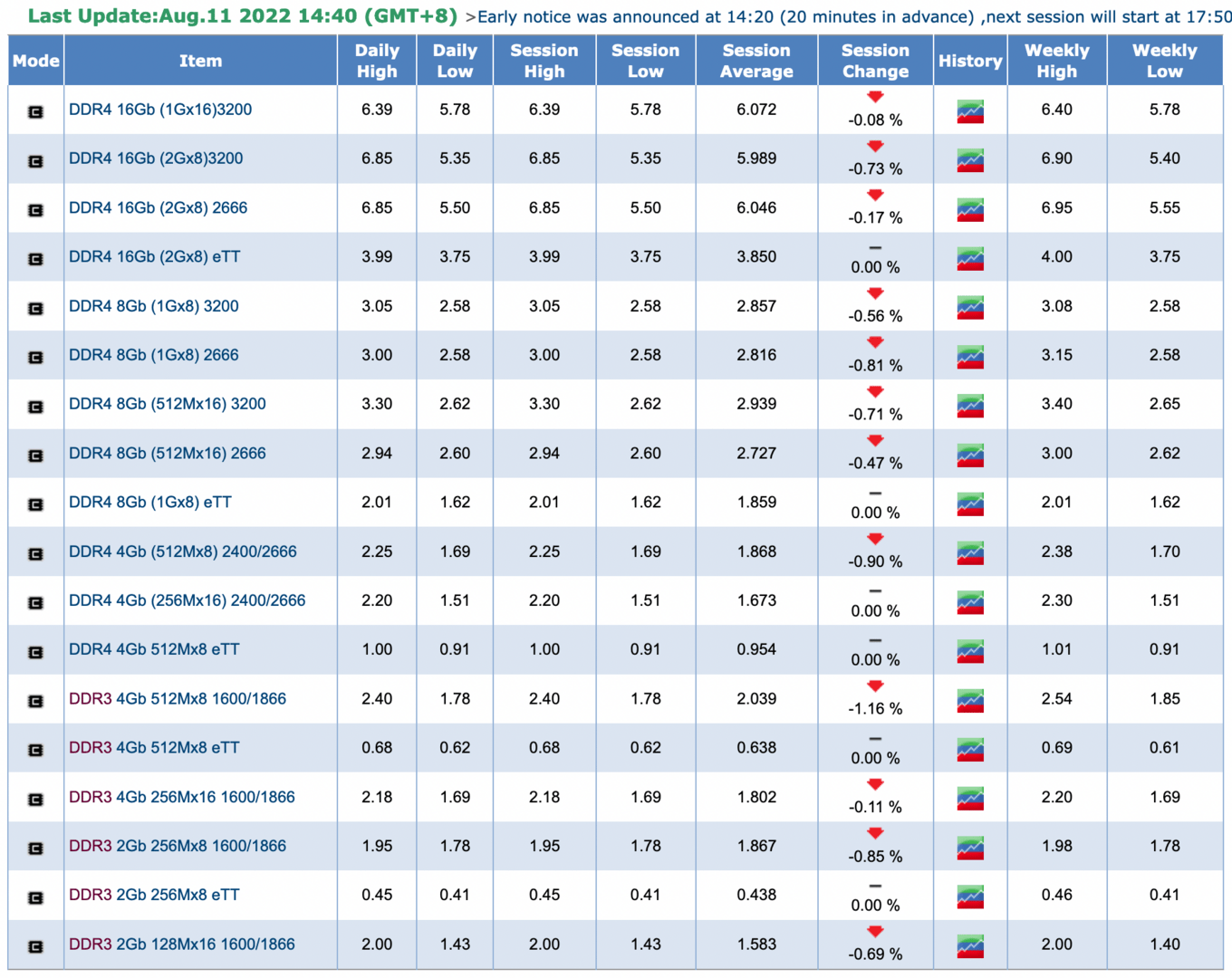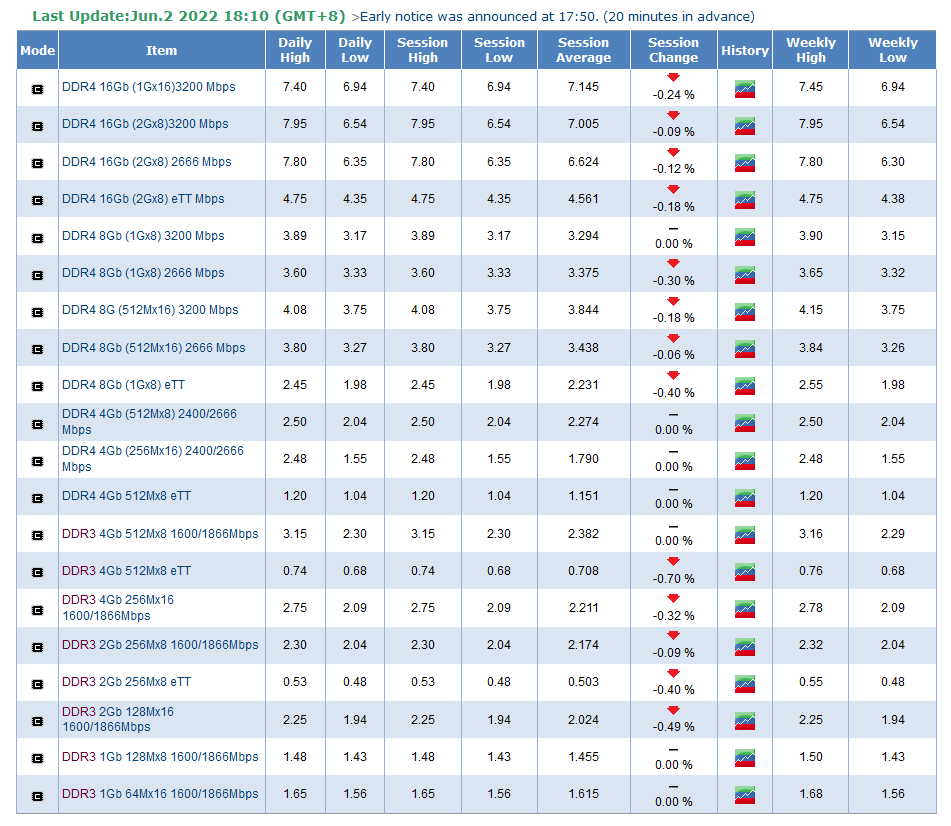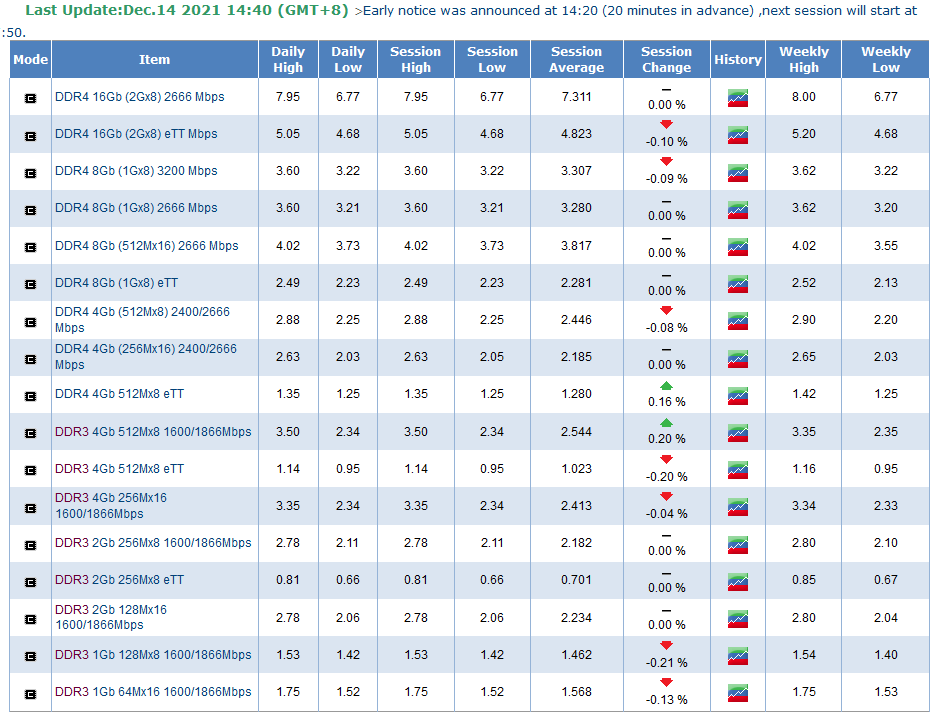DRAM chip prices continue to plummet. DDR5 in particular yields significantly, by up to 20 percent. Further high percentages are to follow in this quarter, and it could be another 15 percent on average in the fourth quarter. But DDR4 is also becoming significantly cheaper.
The high rate of inflation in many countries around the world coupled with fears of energy costs and more mean that the actual peak season, i.e. the best selling time of the year for manufacturers, is flatter than once forecast or seen in previous years. As a result, sales were already falling in the third quarter of this year, and the market researchers are not expecting any miracles for the fourth quarter – in fact, the opposite. Because demand has plummeted, it says, short-term sales are being postponed. At the same time, the large memory manufacturers are still sticking to their planned expansion strategy, which leads to an oversupply of the market with very full warehouses and ultimately to falling prices.
 Price forecasts by market researchers (Image: TrendForce)
Price forecasts by market researchers (Image: TrendForce)DDR5: Up to 30 percent cheaper in half a year
The price drop is led by DDR5 memory. The market penetration of this standard is still rather low, but should now pick up speed. However, since all DRAM manufacturers are now using these chips to a greater extent in production, the prices continue to fall steadily. Up to 20 percent in the past three months could be increased again by up to 18 percent in the next three months. In the server segment, the chips are even said to drop in price by up to 30 percent – but there is de facto no platform here that has gone beyond the status of a pre-series model. Intel Sapphire Rapids will not be available until 2023, and AMD Genoa is also only expected to deliver the first statistics this year. Spot price plummets
The price reduction is also clearly visible for DDR4 memory. In percentage terms, this is similarly pronounced and is also traded as such on the DRAMeXchange memory exchange. While the average spot price for a single 16 Gigabit DDR4-3200 chip was just over $7 at the beginning of June and then $6 in mid-August, it's now just $4.70. Within a quarter, the price slide here is extremely extreme, the collapse in demand in the notebook segment in particular plays a decisive role here.
-
 RAM spot price in Asia on September 23 (Image: DRAMeXchange)
RAM spot price in Asia on September 23 (Image: DRAMeXchange)
Image 1 of 5
 RAM spot prices on August 11, 2022 (Image: DRAMeXchange)
RAM spot prices on August 11, 2022 (Image: DRAMeXchange) RAM spot prices on June 2, 2022 (Image: DRAMeXchange)
RAM spot prices on June 2, 2022 (Image: DRAMeXchange) RAM spot price in Asia on December 14th (Image: DRAMeXchange)
RAM spot price in Asia on December 14th (Image: DRAMeXchange) RAM spot price on September 1st (Image: DRAMeXchange)
RAM spot price on September 1st (Image: DRAMeXchange)But there is currently little movement in the end customer trade. DDR5 memory has become marginally cheaper, and DDR4 has also remained at a low level for a few weeks, but primarily in place. There are currently 244 DDR5 products in the ComputerBase price comparison that can be delivered directly from stock. The entry-level prices are now 119 euros for 32 GB DDR5-4800, which are offered as a dual-channel kit.
If you want it faster, you still have to dig deep into your pocket. The step from DDR5-4800 to DDR5-5200 is clear, but doesn't bring much performance either. DDR5-6000, the next big brand, is at least 100 euros more expensive than the basic version for a similar 32 GB kit consisting of two modules, and you have to pay at least around 230 euros.